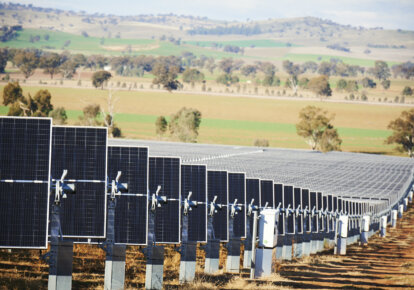Written by Declan Kelly, Flow Power Regulatory Policy Manager
The Australian Renewable Energy Agency (ARENA) commissioned NERA Economic Consulting and Energy Synapse to quantify the value of demand flexibility in the energy transition. The report has now been published and has some important takeaways for governments, policy makers, industry and energy users.
Assessing the potential for increased demand flexibility
The report started with analysis undertaken by consultancy Energy Synapse to assess the potential for greater demand flexibility. This included:
- Electricification of metals and minerals processing
- Smart controls in commercial buildings
- Electric vehicles
- Orchestration of consumers devices such as air conditioners, hot water and pool pumps
- Behind the meter solar and battery storage
- Green hydrogen
Using the information gathered by Energy Synapse, NERA Economic Consulting developed a model to estimate the benefits of demand flexibility under a range of scenarios, over the energy transition.
Demand flexibility’s benefits revealed
NERA found demand flexibility provided benefits including; avoiding the need to invest in new generators and storage, reducing the use of expensive generation and lowering power prices.
Depending on how effective we are in developing and utilising demand flexibility, the system wide benefits range from $1-8 billion, and the consumer benefits ranged from $5-18 billion. These numbers also don’t include benefits associated with a better utilisation of the transmission and distribution networks. There are clearly huge opportunities for the industry and energy customers to grasp!
1 ARENA, Load flexibility study technical summary, p. 8, April 2022.
However, what these reports did not cover in detail is what it will take for the opportunities to be realised. There is work ahead of us to unlock demand flexibility, led by companies like Flow Power. These reports also raise questions for ongoing policy discussions considering major changes to market frameworks. Failing to account for demand flexibility in market design risks jeopardising these benefits.
How ready are Australia’s energy users?
There are a range of challenges that come with unlocking demand flexibility. Unlike power stations dedicated to generating electricity, demand flexibility revolves around how energy users change how and when they consume electricity.
To unlock demand flexibility across the system necessary to achieve the benefits detailed by NERA in their report, energy users need to be supported. Focus needs to be on using a combination of innovation, technological development and customer insights to improve how we:
- Engage with consumers. Direct engagement with customers is a precursor to any meaningful demand flexibility. A key component of this engagement includes providing customers with live data on their electricity usage. Flow Power does so by providing customers with a hardware solution called a kWatch that is able to read the energy usage in real time, and a portal for customers to observe their consumption and load shape in real time.
- Provide customers with choice. Energy customers engaged in providing demand flexibility need to be provided with choice regarding how, when and if they participate.
- Deliver value. Energy consumers need to be able to understand and access the value of demand flexibility. Without the appropriate incentives in place, consumers will not provide demand flexibility.
Ensuring generation adequacy and security of supply
The other pertinent issue is what this means for the debate surrounding the introduction of a capacity mechanism. Flow Power have argued previously that any consideration of a capacity mechanism should carefully consider, among other impacts, the risks it would pose to the future of demand flexibility.
Capacity markets must grapple with the challenge of pre-defining “firmness” of different resources This introduces an uneven playing field between different resource types.
In addition, this introduces significant administrative and compliance burdens on market participants – this administrative complexity would intuitively punish aggregations and decentralised resources compared to large, centralised generators.
A rush to introduce a capacity market could jeopardise the benefits highlighted by ARENA.
Using demand flexibility to become a “price maker” and not a “price taker”
In summary, although there are known challenges to transitioning Australia’s energy users to a more flexible way of using energy, the benefits and opportunities to improve our National Market are clearly apparent. The next steps need to be a focus on what it will take to unlock this demand flexibility.
We believe that it is the energy retailer’s role to facilitate empowering energy users, so they can contribute to the evolution of our energy system.
When energy users are given clear incentives, market transparency and intelligent tools to make demand flexibility efficient and simple, more people will participate and set the new standard for optimised energy use.
If we can empower the demand side of the energy equation – especially with consumer involvement, this will help us accelerate the development of a reliable, robust, and renewable energy system.
Any questions? We’re here to help.
If you have questions about ARENA’s report of demand flexibility, the National Energy Market or energy opportunities for your business, please don’t hesitate to reach out to the Flow Power team.
? 1300 08 06 08 (between 9:00am-5:00pm Mon-Fri)
?️ Live chat message (within business hours via the chat button at the bottom of your screen)
Alternatively, you can submit your questions through our website contact form here.
















